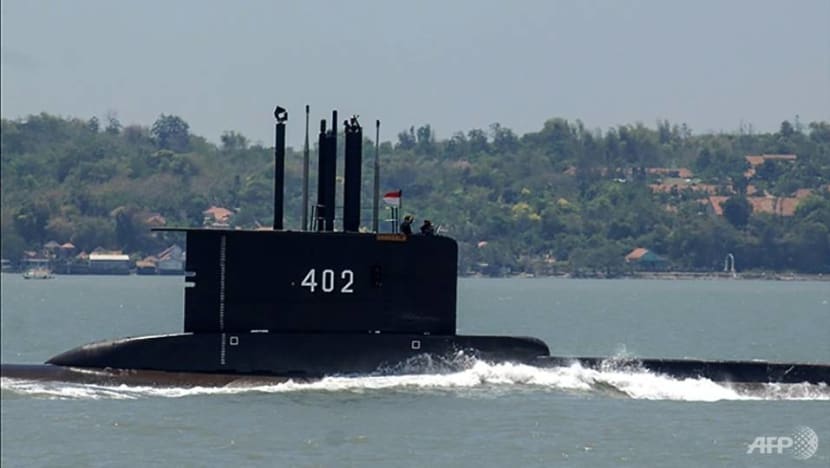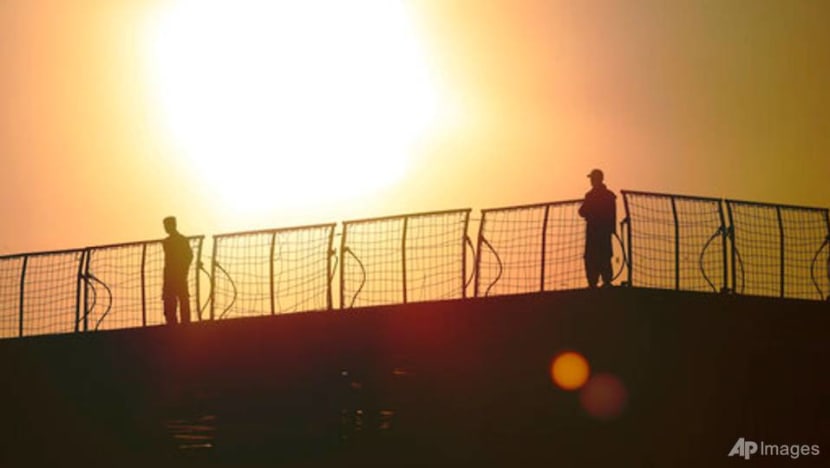commentary Commentary
Commentary: Submariners face huge challenges underwater - where there's no margin for error
Dealing with 12 hours a day on watch and the need for high operational readiness, submariners have a hazardous career, says James Goldrick.

Indonesian submarine KRI Nanggala 402. (Photo: Facebook/Pusat Penerangan TNI)
CANBERRA: In a region where many nations are according high priority to acquiring a submarine force, the tragic loss of Indonesian submarine KRI Nanggala reminds us how challenging submarine operations can be.
There is no doubt submarines possess unique offensive powers. Their ability to attack unseen creates immediate challenges for any would-be aggressor, no matter how powerful its own fleet. Even a single submarine can be a deterrent.
But operating submarines can be a costly, complex undertaking. For one, investing in a submarine force requires commitment to substantial, long-term investment in both personnel and maintenance.
After all, submariners must be trained to understand the operation and interaction of every system in their boat and practised in every possible contingency until their responses become instinctive.
All this before they learn to operate their boat as a weapons system in a demanding underwater domain.
READ: RSIS professors pay tribute to alumnus Heri Oktavian, the commander of sunken Indonesian submarine
HIGH OPERATIONAL STANDARDS
Maintenance and verification standards have to be as high as the most complex aircraft, for the same reason. There is little margin for error underwater or in the air.
Like aircraft, submarines must be assessed and extensively refitted at regular intervals – normally set at every five to seven years in major submarine forces.
Known as “full-cycle docking”, this work involves the survey and renewal of practically every component, with key parts such as valves either replaced outright or refurbished.
The hull and, in particular, any welds will be carefully examined using x-rays and other technologies to ensure there are no cracks or other signs of metal fatigue.

Doing such work either requires a new submarine operator to seek the assistance of bigger, more established submarine operator navies or make considerable investment in its own infrastructure.
Such investment extends not only to dockyards and workshops but expert technical personnel in what are high and very perishable skills.
All this means the lifetime cost of submarines is much more than the price of acquiring them – and money must be available all the time.
READ: Commentary: Indonesia submarine tragedy exposes painful realities of international rescue operations
ISOLATION AT SEA
Life in a submarine is not easy, even if the teamwork and mutual trust that develop as a crew learn their work are the source of the great pride and high morale that mark submariners as a group.
This cohesive camaraderie is best summed in the attitude they develop to non-submariners: Submariners joke that there are only two kinds of ships – submarines and targets.
They know they must endure long periods on patrol with no access to the outside world. This applies not only to communications but even exposure to sunlight and fresh air.
The Internet and the advent of social media have meant that the isolation of submariners when at sea has become even more exceptional by comparison with contemporary culture, particularly compared to the lifestyle of the young people who form the great majority of submarine crews.

HUMAN ENDURANCE TESTED BUT CANNOT BE EXCEEDED
Submariners work all the time in very cramped conditions. In some boats, there are more people than bunks, forcing the crew to rotate through what is available, known as “hot bunking”. Some may need to sleep within centimetres of torpedoes in their stowages.
Operating the submarine and maintaining the necessary watches goes on 24 hours a day. Most submarine crews operate in a “one in two” routine, where they are put on active duty 12 hours of the day.
This is demanding enough, but in the remaining time the crew must not only sleep, eat and get what recreation they can, but conduct maintenance and administrative work.
Yet, fatigue is something that must be managed. A submarine’s commander must ensure the limits of human endurance are not exceeded, as they can be in a long patrol.
READ: Commentary: Meet the Republic of Singapore Navy’s new poison shrimp. They even call it 'Invincible'
ALWAYS WATCHING THE CRUSH DEPTH
Yet, submarine crews must train extensively to react to any emergency. A submarine is operating at the margins of safety.
Machine must cooperate with man and has been developed to do so. A submarine’s design and material condition must be good enough to endure the pressure of water, pressure that increases rapidly with depth.
Yet sometimes it does not behave. Any failure of a weld, a valve or a pipe can mean disaster. Once a submarine passes a certain depth – its crush depth – the pressure will become too great for the integrity of the hull, which will implode, killing everyone onboard.
This may be what happened to KRI Nanggala, found at more than 800m below the sea surface, though we should wait for investigations to produce definitive findings.
Such failures caused the destruction of the US nuclear submarine Thresher in 1963.

British trials after the Second World War suggested, as a rule of thumb, that a submarine’s crush depth was twice that of its maximum intended safe operating depth.
When a submarine can dive to 300m or 350m – even the elderly Nanggala could easily go down to 250m – that sounds a lot. But a boat that has lost control can exceed its crush depth within minutes, if not seconds.
DANGERS OF FIRE AND MALFUNCTION
Fire is another danger, particularly if it involves the electric batteries which provide power when submarines like Nanggala dive. Mismanaging battery charging can result in the build-up of hydrogen gas and an explosion can follow.
Emergency breathing apparatus is distributed around a boat to ensure that personnel are not immediately overcome by smoke and poisonous fumes. But a fire can quickly get out of control, disabling systems and forcing compartments to be shut off.
Weapons can also malfunction. An exploding torpedo caused the sinking of the Russian submarine Kursk in 2000, killing 118.
READ: Commentary: Fighter jets get attention but defending Singapore against rockets and drones require very different tools
READ: Commentary: They already have jet bombers and super missiles. Will Chinese fighter jets be more powerful than America’s soon?
Minelaying submarines have been sunk by their own mines, as almost certainly happened to the Pakistani submarine Ghazi off Visakhapatnam during the 1971 Indo-Pakistan war.
Sometimes the cause remains uncertain, as in the case of the American nuclear submarine Scorpion, which sank in 1968.
In any emergency, whether fire or flood, submariners’ best hope is to blow ballast, forcing compressed air into the tanks filled with water that allowed the boat to submerge. This should bring the submarine to the surface.
This may not save the boat, but the crew can at least get off. The Soviet nuclear submarines K-8 and K-219 made it to the surface after major accidents in the 1970s and 1980s, saving most of their crew, but both later sank while under tow.

A HAZARDOUS TRADE
A bleak reality of submarine operations is that if a submarine goes missing in an area where the depth of water is greater than its crush depth, there is little hope for the crew’s survival. For most submarines, this is between 500m and 600m, perhaps a little more.
Nevertheless, there are many localities where the water is shallow enough that rescue may be possible. Once a submarine goes missing, even if sunk in shallow water, finding it, and rescuing the crew is a race against time.
The crew have limited air and their survival is likely to be measured in a few days at the most. The other factor involved is the availability of underwater rescue vehicles.
READ: In race to find missing Indonesian submarine, carbon dioxide may be the enemy
This is why, as many submarine operating navies do, a rapid response rescue ship with underwater vehicles is kept at short notice to deploy.
This is also why, as shown with the Nanggala, there are standing international agreements to provide help – and practically universal readiness to do so as quickly as possible.
And yet, submarining is and will remain a hazardous trade.
James Goldrick is an Adjunct Professor at the Strategic and Defence Studies Centre of the Australian National University. He retired from the Royal Australian Navy as a two-star Rear Admiral in 2012.














